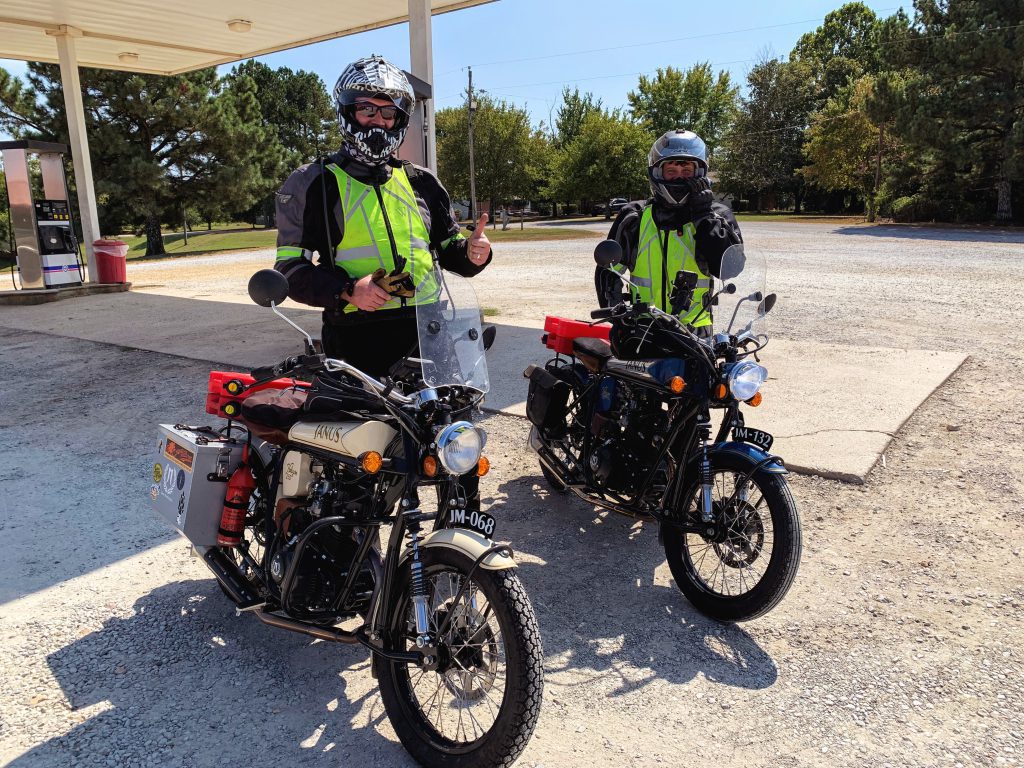Ridecraft
April 24, 2023
Share this post
“Ridecraft” is a term we borrow from the long-distance riding community, a seasoned cast of riders who practice some of the most extreme riding possible. The holy grail of the “LD” community is the Iron Butt Rally, a grueling event that takes place every two years, ranging across the continent with participants gathering “points” by visiting various sites over an eleven-day period in a trans-continental treasure hunt.
Riders who place well in the rally typically rack up well over 11,000 miles in the course of those eleven days. While some could decry this type of riding as foolhardy and dangerous, the LD community takes great pride in their safety and ability to mitigate risk, boasting some of the lowest accident rates in motorcycling.

Two ramblers on trusty Halcyon 250’s halfway through an Iron Butt Association 1000-miles in 24 hour “Saddle Sore 1000”.
Our friend and mentor, Tim Masterson, a seasoned Iron Butt Rally veteran, LD rider and retired army combat aviation operations planner, has summed of up the tenets of ridecraft as follows:
Ridecraft is the collection of knowledge, skills and abilities used by a long distance motorcyclist to maintain a consistent ride pace, manage risk, and achieve navigational objectives.
The navigation, planning, and riding skills, along with the physical and mental endurance required to perform this kind of extreme riding is not for everyone. Iron Butt riding is different, strictly speaking, from what we call “rambling” here at Janus. It sacrifices the easy pace that we associate with leisurely rides for a highly-disciplined regimen. However, if understood properly, it is in fact more like a version of our everyday riding taken to an extreme.
As such, the concept of ridecraft that these “road-grimed warriors” have developed over their many miles is a concept and practice that will serve the rambler well, no matter what kind of mileage they accumulate. Becoming skilled in ridecraft means well-prepared, safer riding and a framework for expanding our “comfort horizons”, which in turn means experiencing more of the transformative sensation of riding that we call rambling.